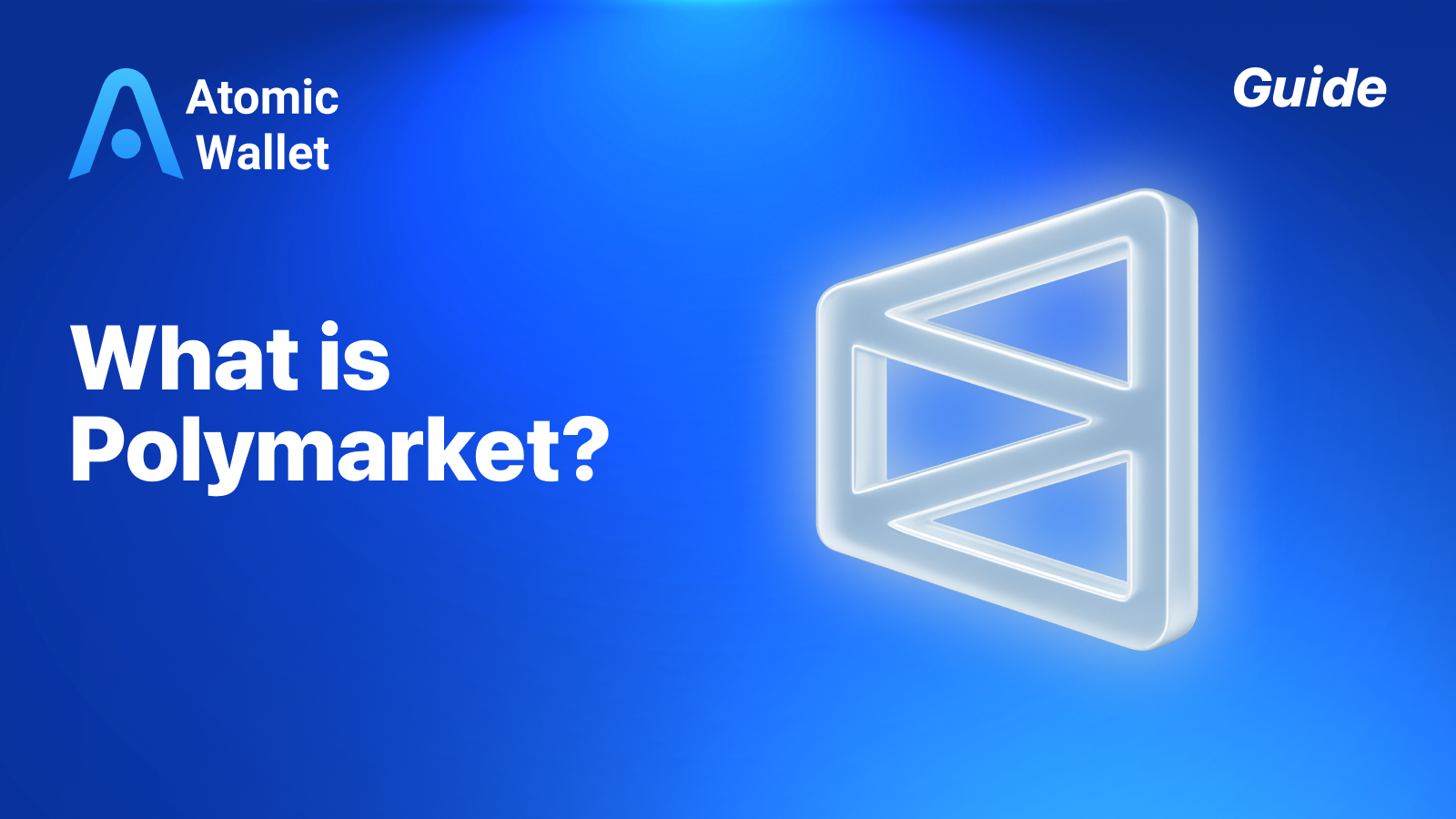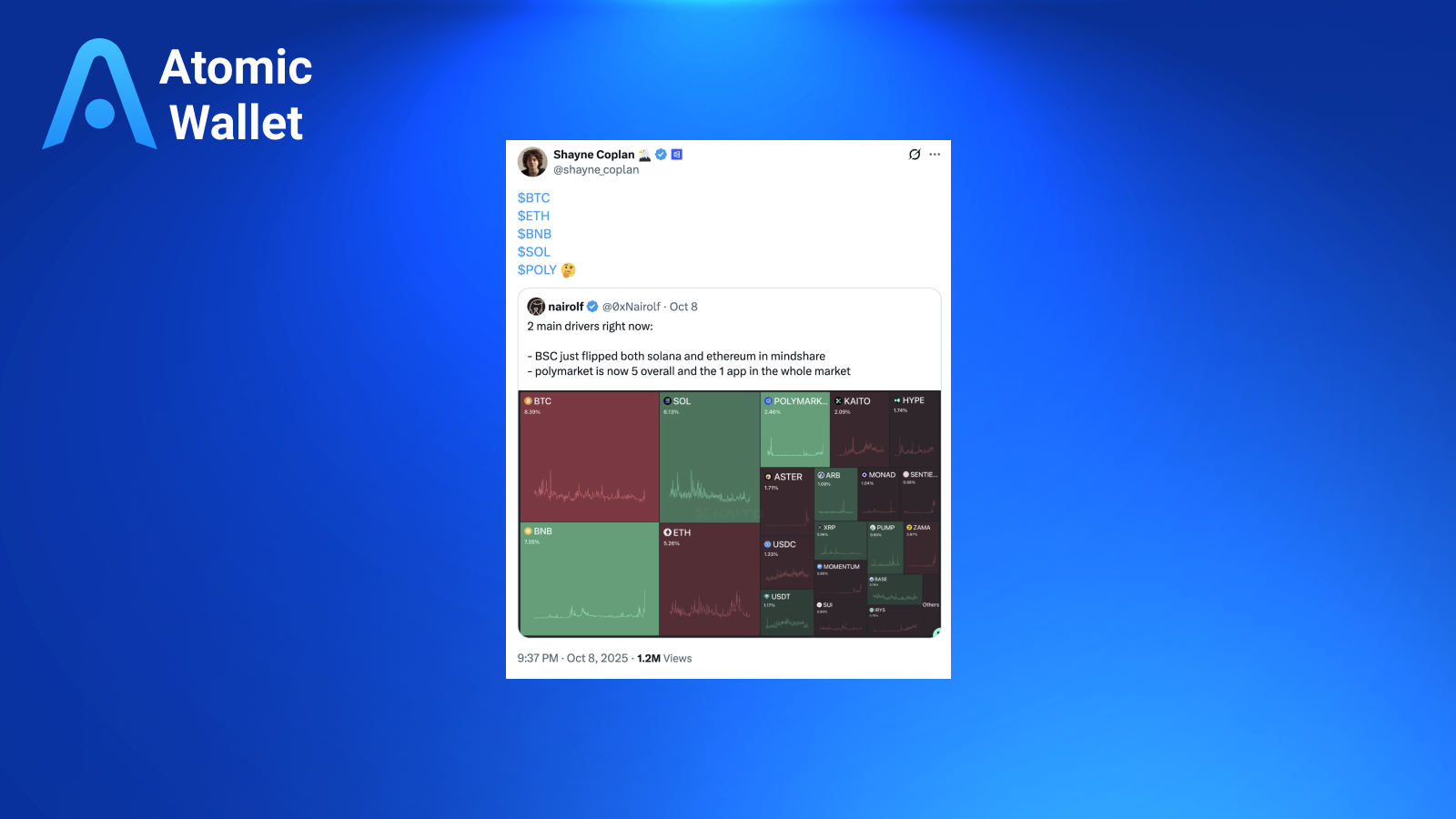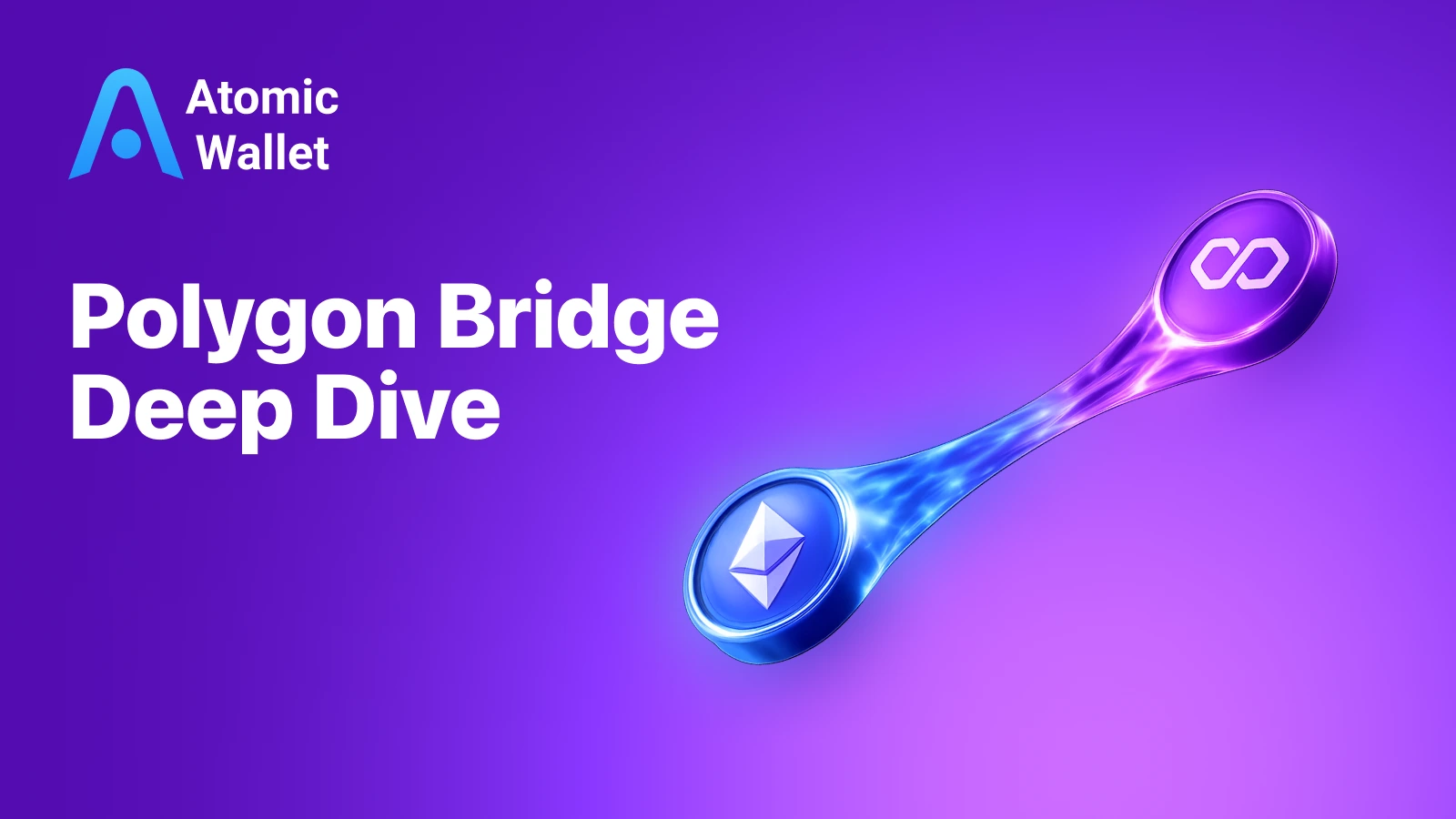Assets

Exchange

Buy Crypto




Polymarket is changing how people bet on real-world outcomes — from elections to sports — all powered by crypto. Built on the Polygon blockchain, it brings transparency, automation, and global access to the world of prediction markets.
The project recently made headlines after a $2 billion investment led by Intercontinental Exchange (ICE) — the owner of the New York Stock Exchange — and fresh hints from CEO Shayne Coplan about a potential $POLY token.
In this guide, we’ll break down what Polymarket is, why it matters for DeFi investors, and how you can get involved — or track related tokens like USDC and POLY right inside Atomic Wallet.

Polymarket is a decentralized prediction market built on Polygon, where users trade outcomes of real-world events using crypto — like “Who will win the U.S. election?” or “Will Bitcoin hit $150K by December?”.
You buy shares in an outcome with USDC, and when the result is confirmed by on-chain oracles like Chainlink, the winning side’s shares pay out $1 each. Everything runs through smart contracts — no bookmakers, no middlemen, no restrictions. It’s fast, global, and transparent — a crypto-native way to turn knowledge into value.
In Polymarket, everything is global, anonymous, and transparent, thanks to blockchain. For example, during major events like elections, trading volumes can reach millions of dollars, and users earn from accurate forecasts. If you’re a beginner, start small: connect a wallet, top up with USDC, and choose a market. But remember the risks, as in any trading, you can lose money if the prediction doesn’t come true.
Overall, Polymarket is a bridge between the real world and crypto, where data and opinions turn into assets. Now let’s move on to how the platform has developed and what made it notable.
To understand Polymarket’s trajectory, let’s look at its key milestones and evolution; this will help see why the platform remains relevant in the long term. From its launch in 2020, Polymarket has gone from a niche startup to a serious player in DeFi. One turning point was major investments, including a $70 million round in 2024 from Founders Fund (Peter Thiel) and Vitalik Buterin, followed by up to $2 billion in 2025 from Intercontinental Exchange (ICE), valuing it at $8 billion and including partnerships on tokenization.
“Polymarket raised $2 billion in a new round from top venture funds, including Founders Fund. This is one of the largest rounds in DeFi, underscoring the potential of prediction markets.”
CryptoRank
Such infusions signal trust in the prediction markets model and highlight scaling potential. Development happened in stages: first, focus on the technical base, integration with Polygon for low fees and fast speed. Then, expansion of markets: from politics (elections in various countries) to entertainment (Oscars, sports leagues) and even science (climate forecasts).
The platform evolved, adding features like liquidity pools, where users provide liquidity and earn fees. Arguments for further growth include two paths: a traditional IPO, which could attract institutional investors and ensure regulatory stability; or launching its own token (like $POLY), which would give the community tools for governance, staking, and rewards. Regardless of the direction, these events show how Polymarket adapts to the changing crypto landscape.
Similar to early bets on Uniswap or Chainlink, these investments show how crypto-native ideas can scale into mainstream finance. Polymarket is now moving from an experiment to a core DeFi primitive, bridging data, markets, and crowd intelligence.
Challenges remain — especially around regulation and data verification — but its momentum signals growing institutional interest. Whether Polymarket goes the IPO route or launches $POLY, both paths could reshape how people interact with markets.
Polymarket is a prime example of how crypto infiltrates everyday life, creating new economic models. At its core is a connection to DeFi (decentralized finance): the platform runs on Polygon (a layer-2 Ethereum solution), uses USDC for bets, and smart contracts for automation. This relates to crypto because it solves key problems of traditional markets: lack of trust, high entry barriers, and manipulations.
Here, everything is on the blockchain, transparent, immutable, and globally accessible. Why is this important? Prediction markets in crypto are a trend where data becomes assets. Imagine: you’re not just voting with your opinion, but investing in it like stocks. In the crypto context, this strengthens the DeFi ecosystem: integration with wallets, swaps, and staking allows combining predictions with other tools.
The potential of a token like $POLY could add utility, for example, discounts on fees or voting for new markets. On the other hand, an IPO could attract fiat money, making the platform a bridge between Web2 and Web3. Risks, of course, exist: volatility, regulatory barriers (like the $1.4 million CFTC fine in 2022 for unregistered derivatives), and dependence on oracles. But the pros outweigh them; it’s a tool for hedging risks, data collection, and even social impact (markets on ecology or politics influence public opinion).
In crypto, Polymarket underscores the power of decentralization: collective intelligence is often more accurate than experts. And here’s why we at Atomic Wallet are writing about this: as a multi-currency wallet, we see long-term opportunities for users. Our tools will help integrate into such platforms without hassle, but we’ll reveal the details in the conclusion.
You can explore Polymarket using any wallet that supports Polygon and USDC. To stay ready for a potential $POLY token, keep your USDC and future airdrops secure in Atomic Wallet — your keys, your crypto.
1. What is Polymarket used for?
Polymarket lets users trade on real-world outcomes — politics, sports, or economics — using crypto. Prices move as opinions change, creating open, data-driven markets.
2. What blockchain does Polymarket run on?
Polymarket runs on Polygon, a layer-2 network for Ethereum, ensuring fast and low-cost transactions in USDC.
3. Will there be a $POLY token?
There’s no official token yet, but CEO Shayne Coplan has hinted at one. If launched, $POLY may offer rewards, governance, and fee discounts.
4. Is Polymarket legal?
Polymarket operates under global DeFi standards and doesn’t serve certain restricted regions. Always check local regulations before trading.
5. How can I get ready for a possible $POLY airdrop?
You can store USDC or any future $POLY tokens securely in Atomic Wallet, ensuring full self-custody and quick swaps when the token launches.
Polymarket is a timeless example of crypto innovations: from simple predictions to global markets where your insight becomes income. Events like record investments and token hints show that the platform is evolving, offering paths for growth, be it an IPO or a decentralized token. This isn’t just hype, but a fundamental shift in how we interact with data and finance.

Learn how Polygon Bridge works and move Polygon crypto like USDC Polygon between Ethereum and Polygon step by step.